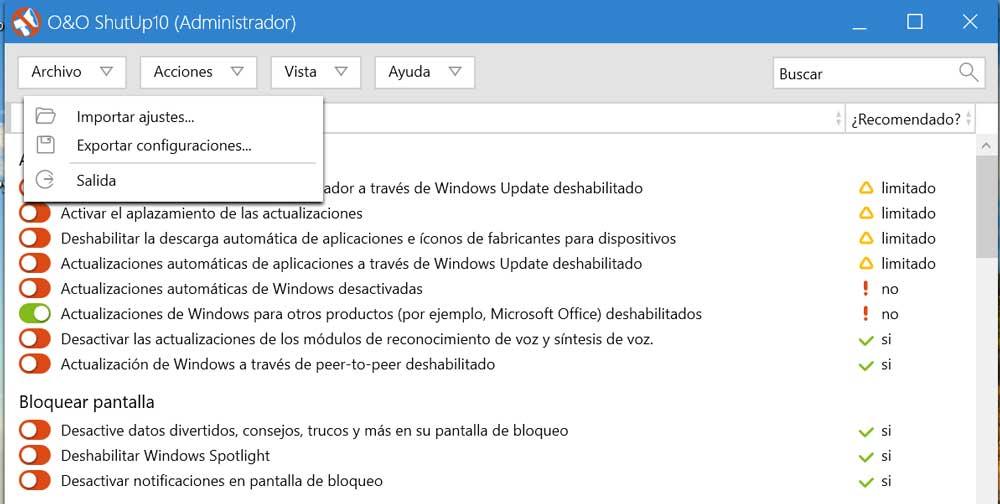

- #O O SHUTUP10 STANDALONE UPDATE#
- #O O SHUTUP10 STANDALONE WINDOWS 10#
- #O O SHUTUP10 STANDALONE SOFTWARE#
Step 3 - In the folder containing policies for Windows Update, double-click on the policy titled "Configure Automatic Updates"
#O O SHUTUP10 STANDALONE UPDATE#
Step 2 - Navigate to: Computer Configuration -> Administrative Templates -> Windows Components -> Windows Update

Step 1 - In the start menu, search for Group Policy, and open the policy editor To Disable the automatic updates group policy: To do this, search for Windows Update using Start." Setting the Group Policy editor policy for Automatic Updates to Disabled does the following: "If the status for this policy is set to Disabled, any updates that are available on Windows Update must be downloaded and installed manually. If you have Home edition, you will have to follow one of the other methods.
#O O SHUTUP10 STANDALONE WINDOWS 10#
One method is by using the Group Policy editor. The Group Policy editor is only available in Windows 10 Pro and Enterprise.
#O O SHUTUP10 STANDALONE SOFTWARE#
If you'd like more information about your ownership of your software, including Windows 10, and to learn about the nature of software licenses and EULAs, you can check out this link: You legally own the software that you purchase, and any claims otherwise are urban myth or corporate propagandaĭespite Microsoft's ongoing failure to meet its legal obligations to respect Windows owners' rights and property, there are a variety ways to take back control of your OS and make it more secure and reliable by controlling Windows Update. In recent years, ever since the release of Windows 10, Microsoft has shown itself to be struggling to grasp the understanding of these things. Microsoft's efforts to oppose and sabotage Windows and PC system owners' ability to control and stop updates from being installed on their machines and modifying their OSes and storage drives against their wills constitutes a clear violation of property laws and is vandalism of people's computer systems and their personally-owned Windows OSes. The ownership rights that people possess over their software naturally includes full decision-making authority concerning whether their software may become modified or not, such as by updates. A highly important aspect of owning property, such as your computer hardware, the data on it as well as any data it generates, your Windows operating system, and other software you've purchased, is exclusively being the person that has the authority to make decisions over it, and being able to make the decisions that you know are the best for your situation.Īs the European Union and Australia's top courts have ruled, and as even the US Supreme Court has indirectly supported, you own the software that you purchase, and you possess full property rights apply to your personally-owned software (with no comparable court in the world ruling contradictory to the European Union and Australia's top court rulings).


 0 kommentar(er)
0 kommentar(er)
